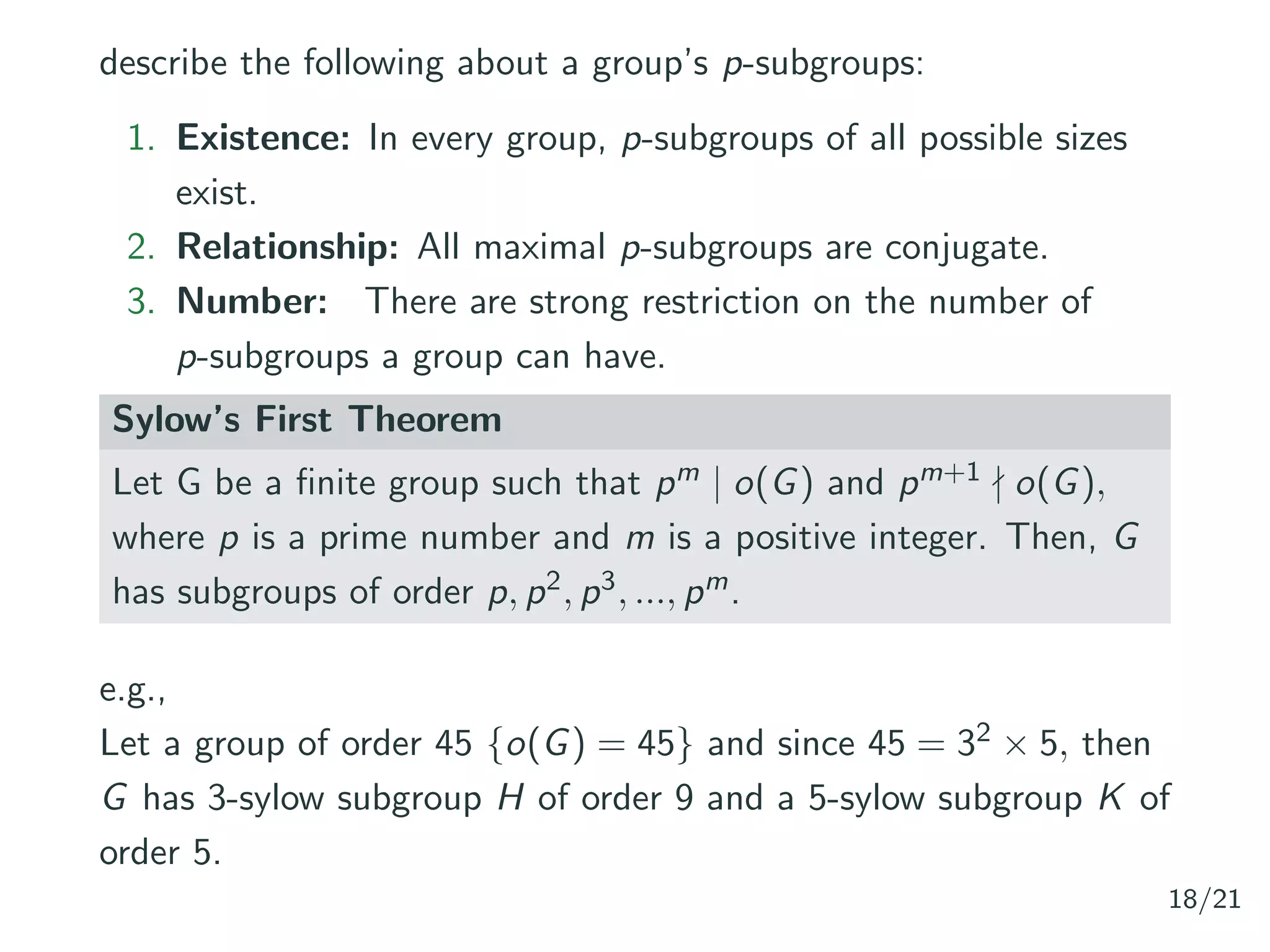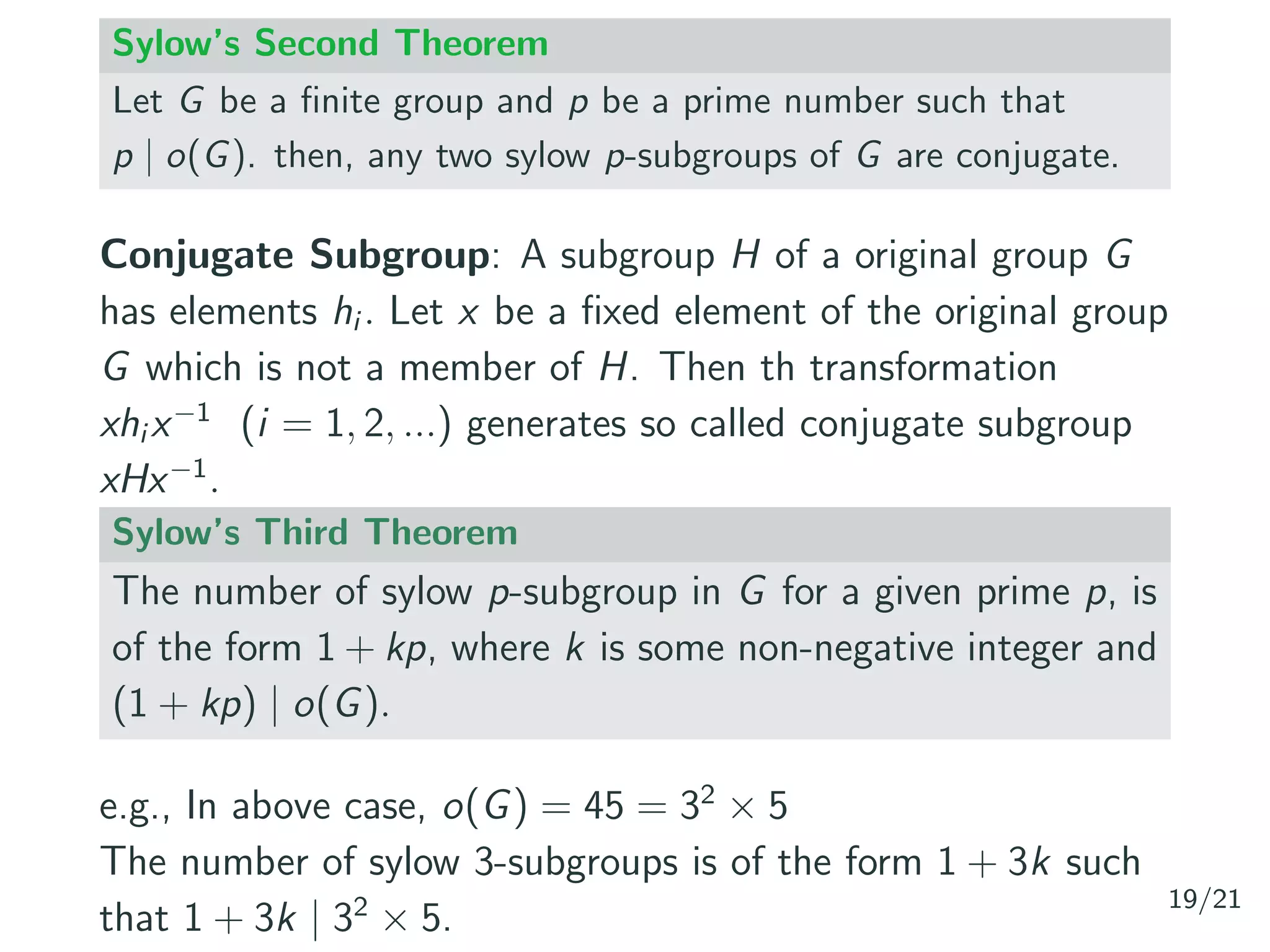This document provides an overview of a seminar presentation on group theory and its applications. The presentation covers topics such as the definition of groups, order of groups and group elements, modular arithmetic, subgroups, Lagrange's theorem, and Sylow's theorems. It also discusses some examples of groups and applications of group theory in fields like algebraic topology, number theory, and physics. The presentation aims to introduce fundamental concepts in modern algebra through group theory.


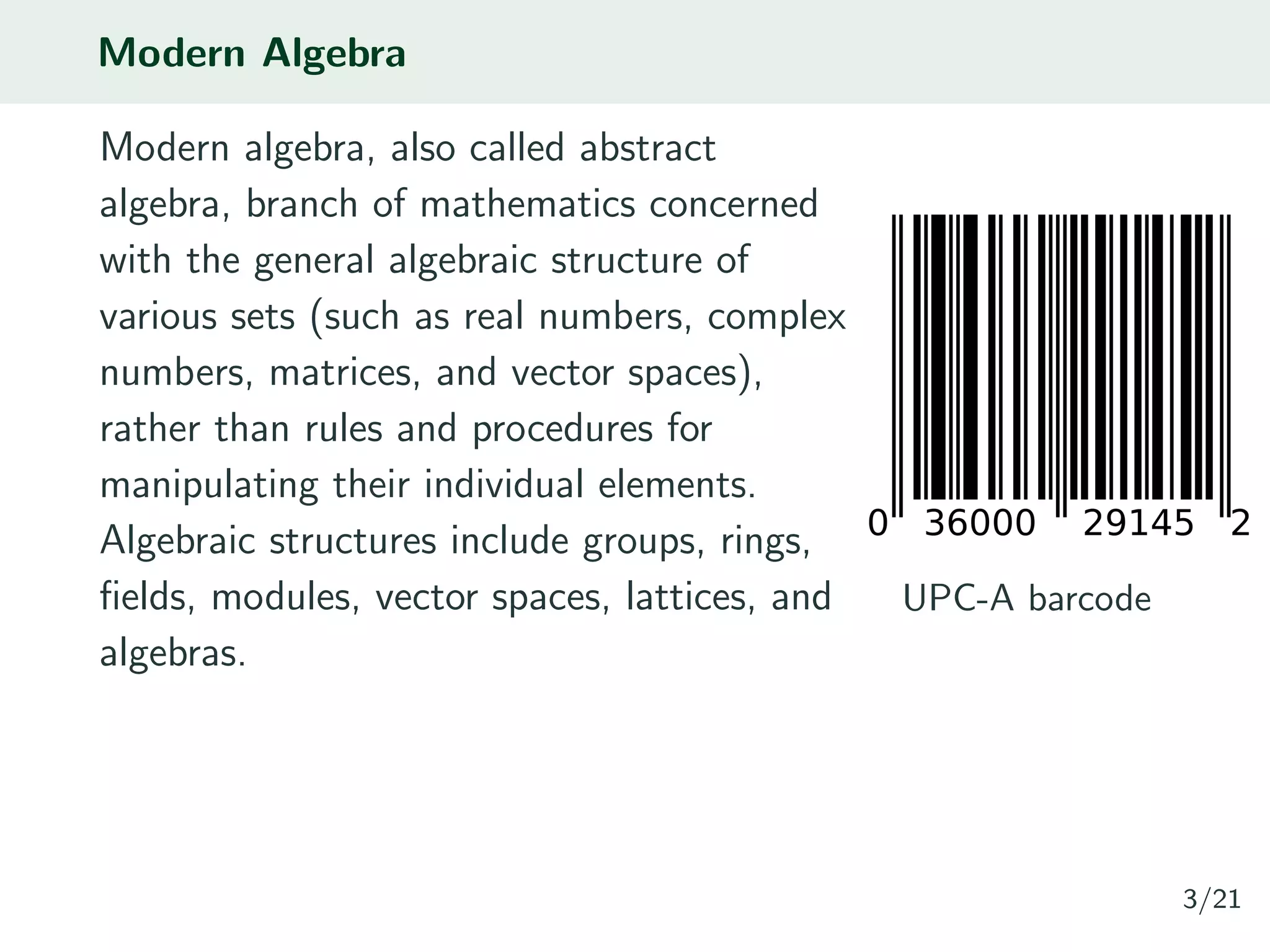
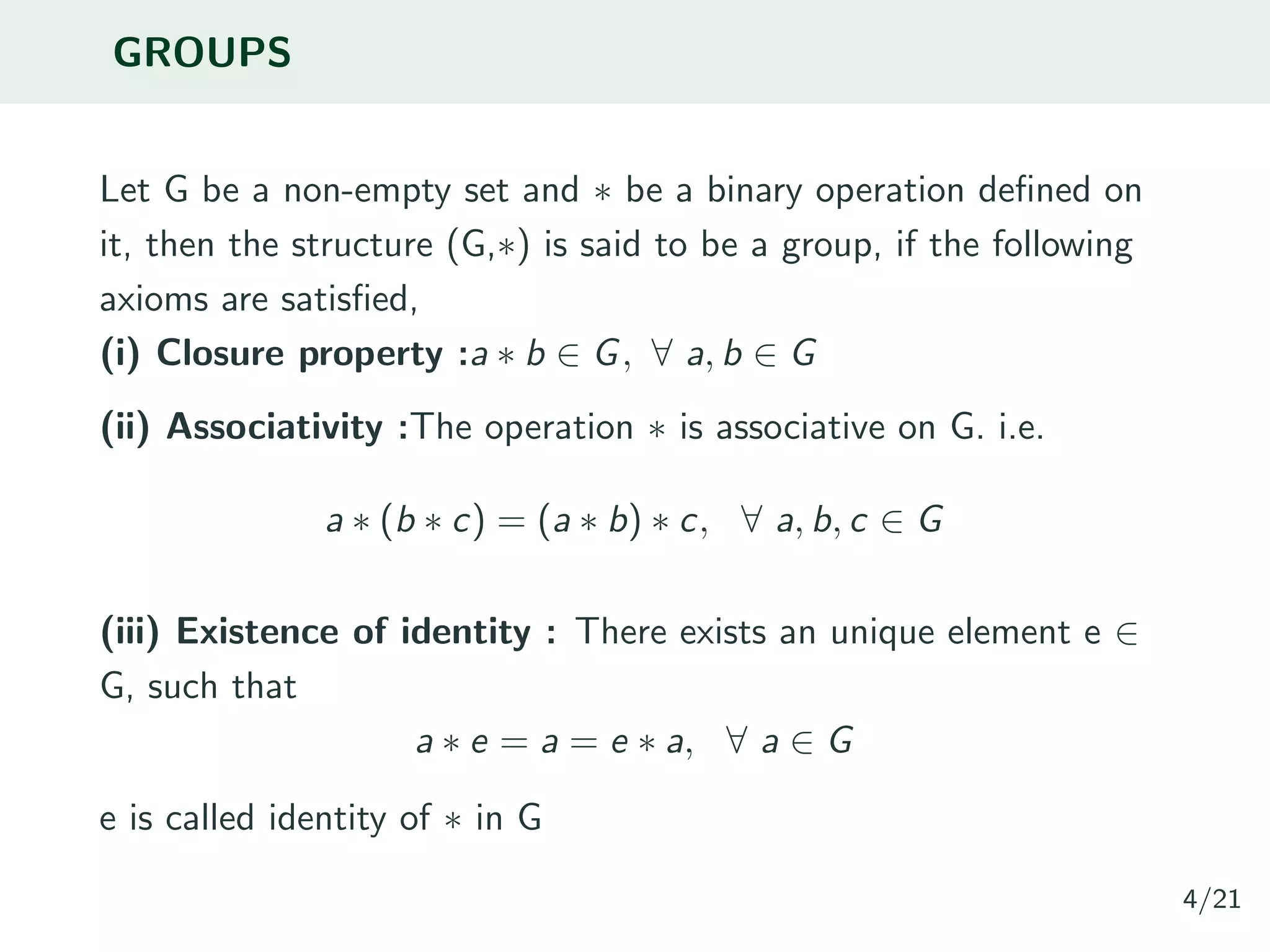




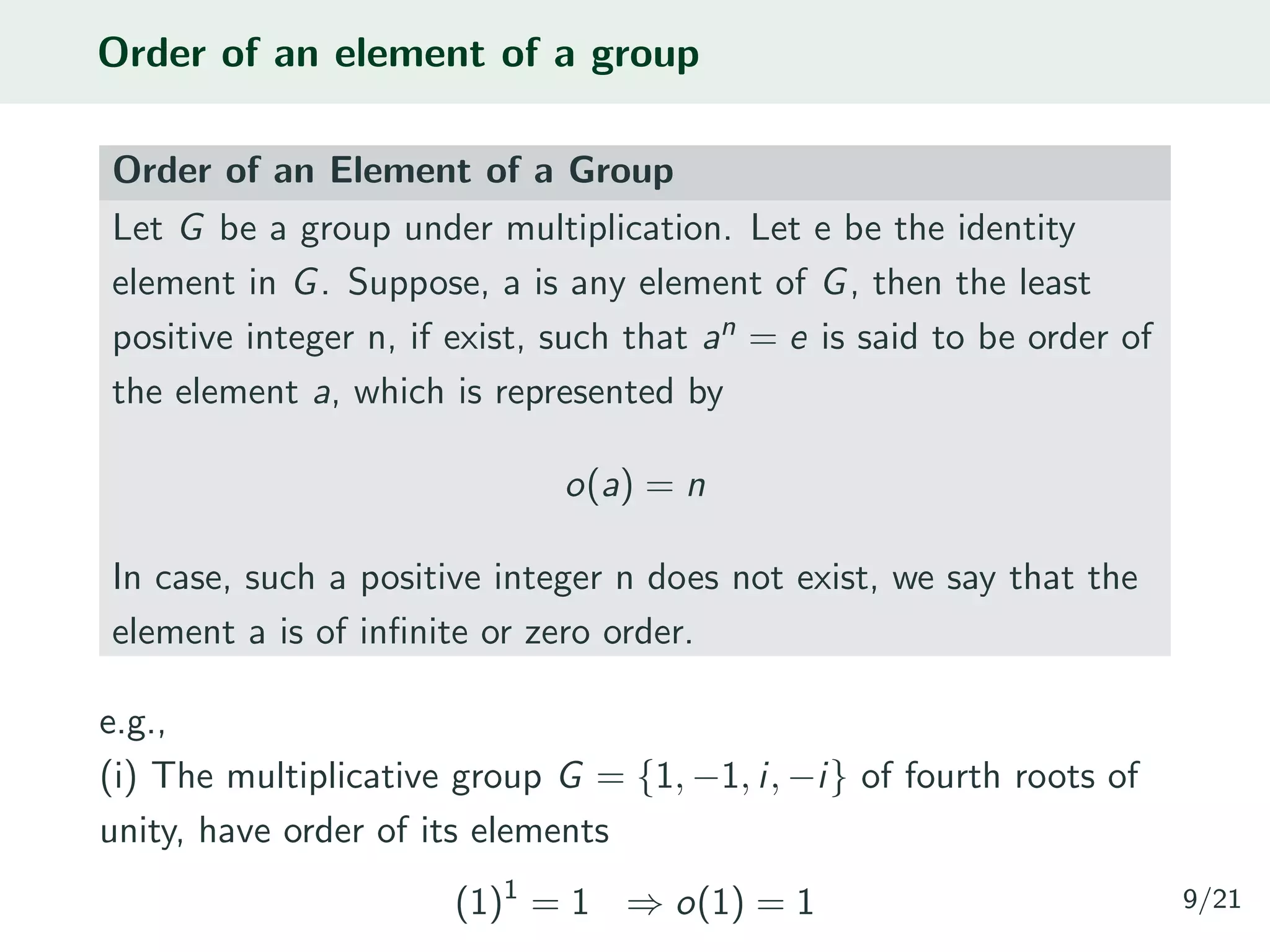
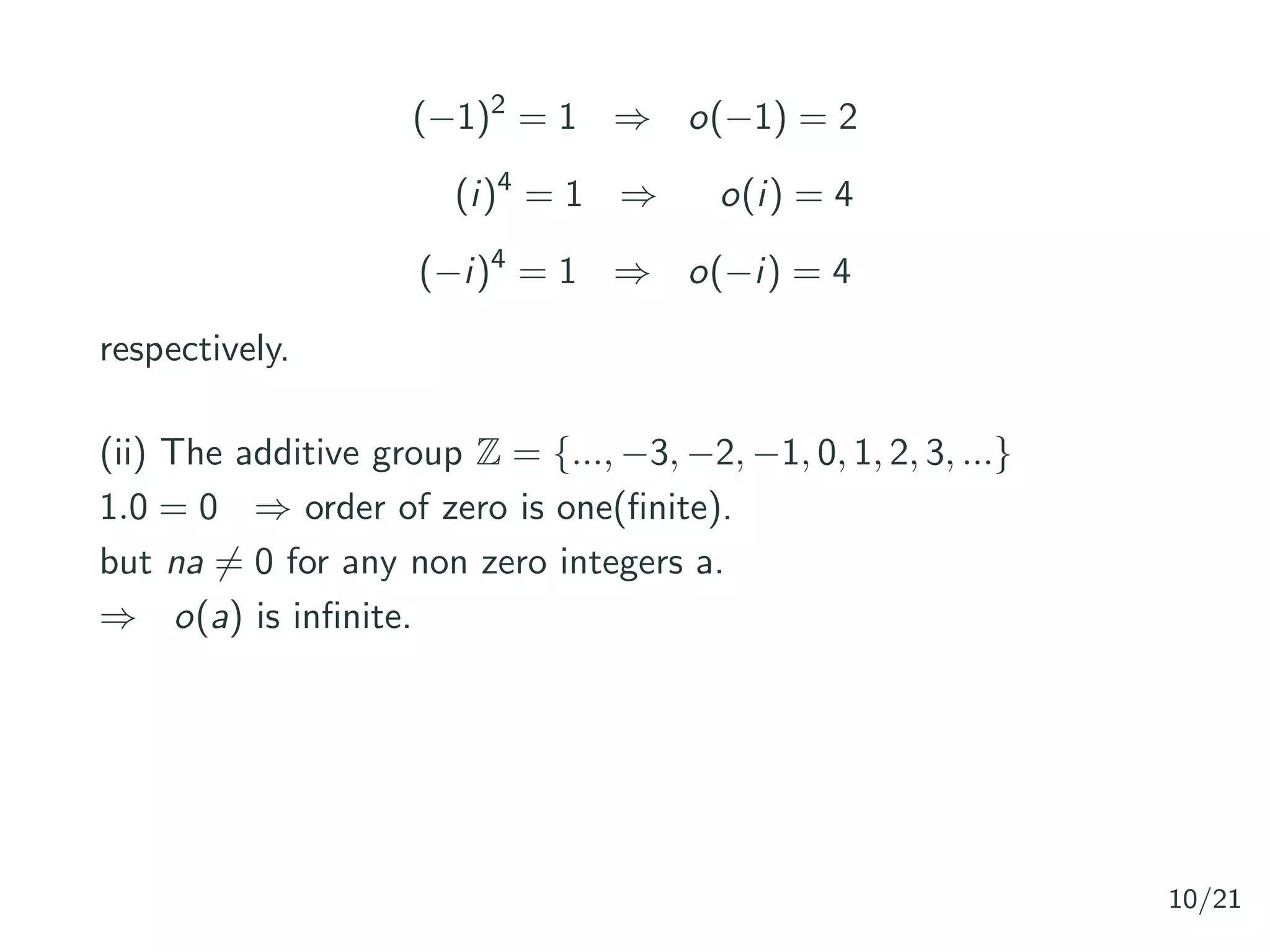


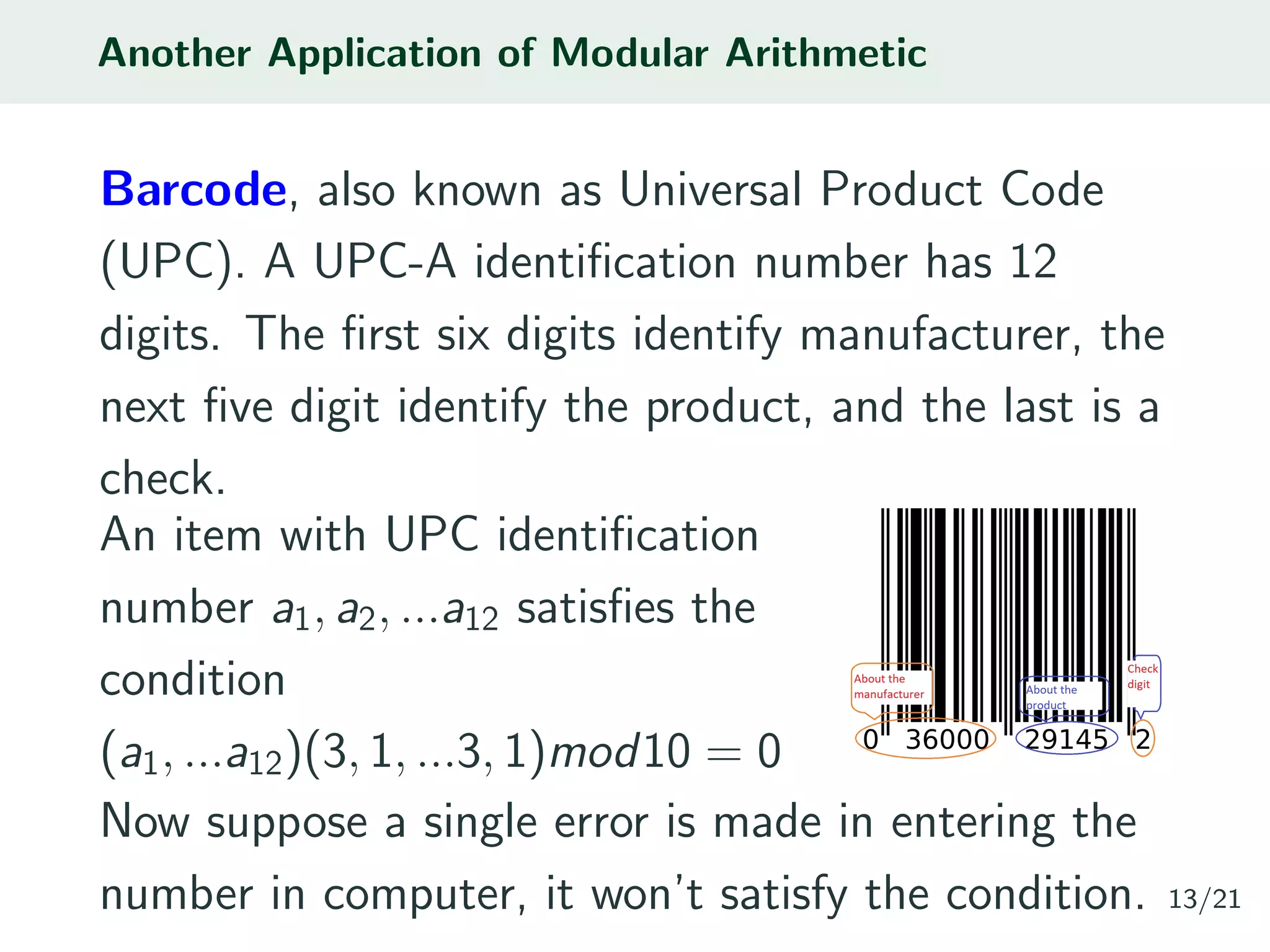
![Subgroup
Definition
A non-empty subset H of a group (G, ∗) is said to be subgroup
of G, if (H, ∗) is itself a group.
e.g., [{1,-1}, .] is a subgroup of [{1,-1,i,-i} .]
Criteria for a Subset to be a Subgroup
A non-empty subset H of a group G is a subgroup of G if and
only if
(i) a, b ∈ H ⇒ ab ∈ H
(ii) a ∈ H ⇒ a−1
∈ H,
where a−1
is the inverse of a ∈ G
14/21](https://image.slidesharecdn.com/beamer-190305130203/75/Group-Theory-and-Its-Application-Beamer-Presentation-PPT-14-2048.jpg)



